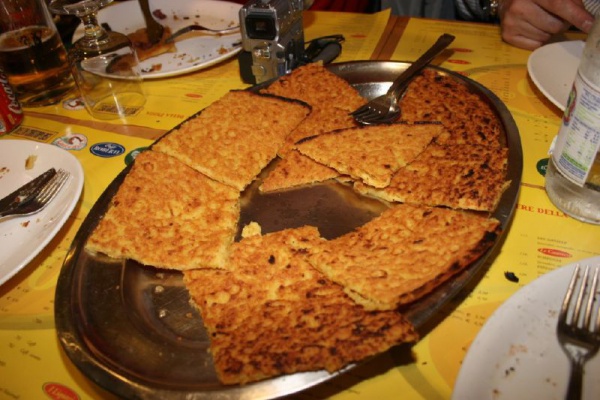Facts About Farinata
Farinata, also known by various names such as socca, torta di ceci, or cecina, is a delectable thin pancake or crêpe crafted from chickpea flour. This savory dish originates from Genoa but has since become a staple along the Ligurian Sea coast, extending from Nice to the island of Elba. The precise origins of farinata remain somewhat enigmatic, though one intriguing theory posits that it was created by Roman soldiers who roasted chickpea flour on their shields.
In Italy, this dish is referred to as farinata in standard Italian, fainâ in the Genoese dialect, socca in Nice, cecina or torta di ceci in Tuscany, and fainè in Sardinia. Across the Atlantic, in Uruguay and Argentina, it is popularly known as fainá. Preparing farinata is fairly straightforward: you mix chickpea flour with water and olive oil to form a batter, and then bake it in a pan. For added flavor, it can be seasoned with rosemary, pepper, and sea salt.
Different regions have their own unique variations of farinata. In some parts of Italy, it is served stuffed into focaccia or sandwiched between slices of bread. In France, you will find similar dishes, such as socca in Nice and panisse in Marseille. Algeria offers a comparable dish called karantita. Farinata has also found its way to Uruguay, Argentina, and Gibraltar, where it is known as fainá, and even to India, where it goes by the name chila or puda.

 Mali
Mali